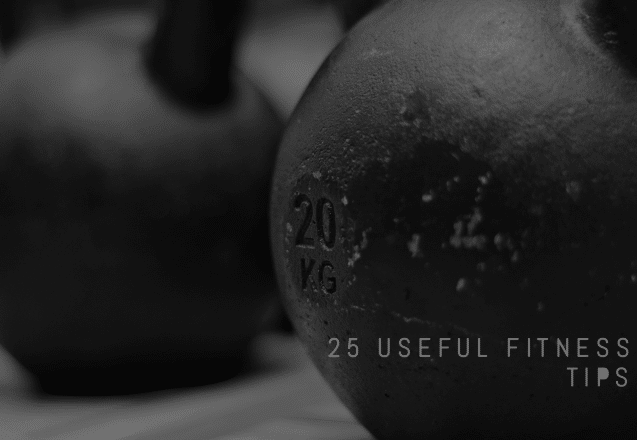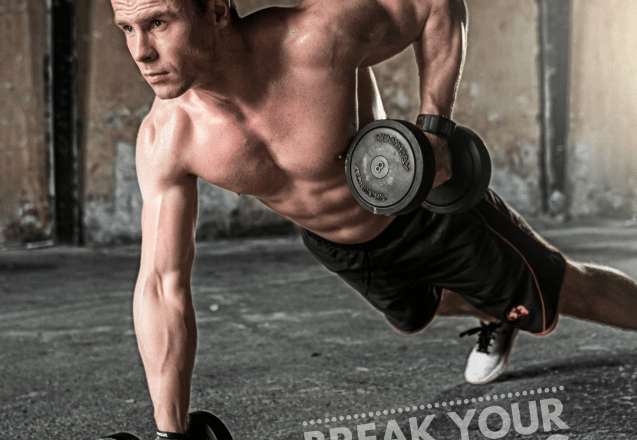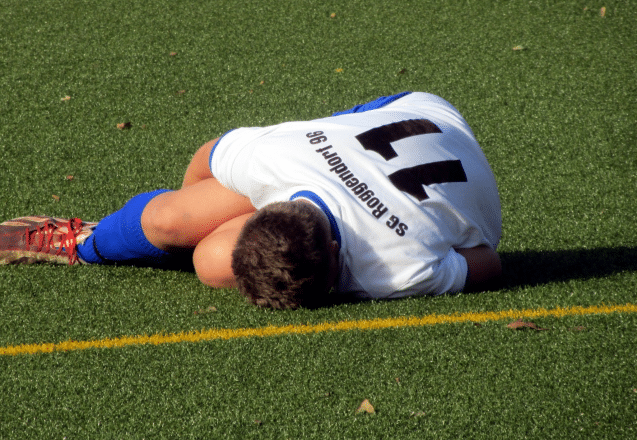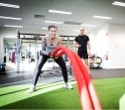Not too long ago during one of our Saturday athlete training sessions, one of my athletes approaches me before the workout to let me know that she had been dealing with shin splints and was in a boot temporarily.
I asked her if she had ever dealt with shin splints before and she tells me no not really.
Injuries happen. There is no way around them when you are an athlete.
If you are well trained, and lucky, you can minimize your chances of getting hurt, but you will never eliminate them.
HOWEVER, a good amount of injury is preventable with proper training and coaching protocol.
Soft tissue injuries and non-contact injuries account for a large amount setbacks that occur at the high school level.
When I spoke a little but more with this specific athlete, she told me that she had informed her coaches that she had been having serious pain in her legs, but they did not listen and told her that she needed to push through.
A few weeks later she is in a boot.
Her case seemed like a clear case of overuse.
Cases like this occur too frequently at this level.
A Culture of Negligence
Before going on, I do want to point out that not every high school program is like this, and that there are some exceptional coaches who actually take their athletes physical well being into consideration and understand the necessary times to push the envelope with an athlete’s training.
Unfortunately, these coaches are few and far between, and the fact of the matter is that most of the coaches who are put in position to train* the athletes don’t spend the time educating themselves on the proper ways to really develop the athlete.
I hear too many times from my kids when they come in to the facility to work out, the kinds of off season training and running that the are required to do to “prepare” for the season, and hear about injuries ranging from sprained knees, back muscles, hamstrings, debilitating shoulder injuries, shin splints, hip flexor pulls, etc.
The training volume (amount of work the athlete is putting in) far exceeds the amount of recovery they are given.
Add this to a system that lacks a true biomechanical assessment to even determine if an athlete is physiologically ready for the types of loads given is a recipe for disaster.
By not truly paying attention to where an athlete is on the physiological continuum of development, you turn a blind eye to what could be best for the athlete and open the door for higher incidence of injury.
*for the purposes of understanding this read, train would indicate being in charge of an athlete’s strength training, and conditioning for sport. That could be the sport coach, or a designated coach
The Scenario
You walk into the high school weight room, and you see a line of squat rand dumbbell racks, maybe with a few medicine balls dispersed throughout the area.
You might see a few athletes in their solo working out, loading a lot of weight using form that even to the untrained person does not look safe (should make any parent cringe.)
At some point, you will also see on a wall somewhere a big whiteboard with a workout written on it that looks along the lines of this:
BENCH PRESS 3 SETS OF 10 (90%)
POWER CLEAN 3 SETS OF 5 (90%)
SQUAT 3 SETS OF 5 (100%)
BICEP CURLS
CRUNCHES
Very basic. A lot of work. A lot of heavy lifting.
I am going to point out that while this workout is not 100 percent bad, it is just not suited for the majority of the prepubescents circulating through the gym.
I can almost guarantee you that if you ask a high school athlete what they did in their weight training class, their workout will look somewhere along these lines.
Parallel to the workout board, you might see another white board, or chart with a list of the “strongest” athletes at the school.
You will see columns of current or former athlete’s names with weights next to their names indicating how much weight they were able to bench, power clean, and or squat.
It is almost the pinnacle of adolescent weight room accolade to get on the board.
So much so that sometime integrity of form is compromised during the actual lift just so their names can grace the board, and acceptance from peers and coaches goes up.
Music blasting, athletes yelling at each other to motivate, coaches (often the football coach or assistant coach) facilitating it, and weights clanking.
*******
Bottom line, with the different stages of growth that occur during prepubescence, and the different stages of mental maturity, these types of workouts are more geared towards those elite varsity athletes (predominantly football) who have gone through these stages and are physiologically capacitated to handle these loads, on top of a rigorous running (conditioning schedule).
Those athletes who aren’t developmentally sound, not on the varsity football team are doing these same workouts on the boards that are not geared towards them.
This would include Cross country runners, baseball players, softball players, lacrosse athletes, and the other “periphery” sports that come second to the football dominant culture.
The reality is that most of the athletes that flow from sports other than football, are not as fundamentally developed physiologically to be doing the same sorts of loads.
So what happens?
Injuries increase because they weren’t structurally or mechanically ready.
Old School Mentality
One thing that has proven effective over the past decade is using science itself in training.
Research continually comes out year after year about precision methods on how to properly train, assess, and prescribe programs to athletes at EVERY level. SAFELY.
There are proven training protocols to take IF you want your athletes to get stronger, get faster, have less injuries (like shin splints sometimes).
What we have prevalent in most schools are assistant coaches taking over the strength programs and conditioning for multiple sports not investing in the education and science of training to really help kids.
We have coaches with the Old School mentality of lift as much as you can, run until you throw up, fight through the pain so that you can build mental toughness.
If I had to question every single coach who uses this approach, I would ask
“Well, how has that been working for you?”
At the elite collegiate and professional levels, organizations invest millions into developing legitimate strength and sports science staffs to improve performance for their athletes.
Obviously not every high school will have the funds for such things, but it doesn’t cost much to go to a few conferences, read a few books, learn how to assess your athletes, listen to you athletes, or to look at the injury rate of the team and deduct that it is time for change.
High school athletes need the expertise the most.
When you are a teenage female facing hip replacement surgery, or your third shoulder surgery, or a nagging hamstring pull that is preventing you from performing at your best, you are hurting your chances of that potential scholarship you are striving for.
You are taking their money. Parents have to deal with doctors (and potentially foot the medical bill).
Teenage athletes are having to deal with the emotional toll of “pushing through” because the coach alienates them if they don’t.
It’s vicious. It’s old school.
They are being destroyed before ever being built up.
Is there a Solution?
In short, yes.
It is multi-faceted, and it will take time and dedication.
There must be a shift in coaches train of thought pertaining to the right way to train athletes in the high school setting.
This issue right now is that most current high school coaches who are in charge of athlete’s strength training and conditioning programs are behind the applicable science curve.
Yes. Running the athlete into the ground until they are no longer able to run can potentially get them in shape, but only to an extent.
However, learning how energy zones work and how they are actually utilized in the athlete’s sport will not only get the athlete in the best shape possible for his or her sport, but can also reduce injury.
The unfortunate corollary of the old school mentality is not really knowing the physiological limits of the athlete. Not knowing the limit pushes the athlete beyond their thresholds, stressing muscles tendons and joints too hard, causing compensatory patterns, and then injury.
It just becomes guesswork instead of calculated programming.
It’s the athletes who suffer.
If an assistant football coach is going to take over the entire strength program for every sport at the school, then it is his obligation and duty for the athletes and parents to pay his due diligence in learning the art and science of coaching.
The science is necessary so that training can be approached objectively, and not executed based on what the coach “thinks” is right as opposed to what has been proven “right”.
It’s an art because essentially it is a culmination of knowing the athlete, knowing WHEN to use certain measures, and creating a program that challenges the athlete, but keeps in fun.
Chances are, wherever you find a program where preseason conditioning is nothing but running, the weight room portion is predominantly Olympic Lifts (which aren’t bad, just not good with poor technique), you will also find a kid who is complaining of back, knee, lower leg pain, even shoulder pain.
You will see kids who aren’t ready for that kind of volume physically having to take it head on.
If I am a parent, I am asking the coach what his or her assessment protocol is, how they put together the program, and how many injuries do they have right now.
In NOT investing time to actually learning how to coach proper training routines, you do a huge disservice to the athlete, putting not only their future athletic careers in jeopardy, but also setting the foundation for diminished confidence because of the emotional toll it has on the athlete.






